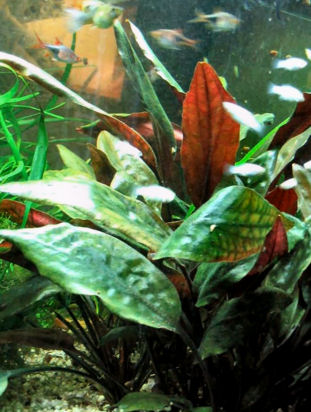In the 1950's a Crypt was exported from Indonesian Borneo that looked like C. cordata but we two feet tall. The plant has been maintained in Germany and Canada continuously since then and a plant was in 2010 photographed in Indonesian Borneo that appears to be the same plant. Even more recently a photo of a flower of these was published and it conforms more to C. cordata cordata negating the idea that only C. codata graboswki is found there.
This appears to be a distinct form of Cordata (although much more evidence is required to confirm that) and it is hoped the name "gradis" can be associated with the plant for historical reasons also because the plant is so big! "grandis" is Latin for "magnificent" which aptly describes this indeed magnificent plant.





